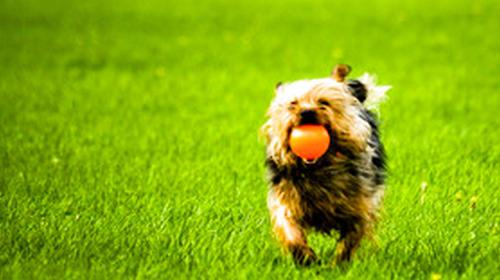Shaking Tail is not necessarily a happy performance
Although it is a troublesome thing to raise pets, when we come home and dogs rush to us to express their intimacy, we will feel that this is also worth it. When dogs welcome the owner, they often perform very excited, and their tails may be shaking. But many times dogs may not be really so excited.
In the study of the human brain, a well -known conclusion is that the brain is divided into two hemispheres -left brain and right brain, and the two hemispheres have division of labor. The left half. The division of labor in the brain is not only unique to humans. In most animals, you can also find the distinction between this "left brain" and "right brain".
For animals, this division of labor is roughly like this: the left brain focuses on behavior and active behavior related to energy -related behaviors, such as looking for food, please the owner, etc.; If you run away when you feel fear. And the dog's tail is just in a special position -the middle of the body, so the researchers want to understand whether the dog's tail shows the asymmetric swing, whether Essence
In order to figure out the relationship between dog shaking tails and emotions, the researchers used 30 mixed -race pet dogs for testing. Each dog is placed in a specially designed cage, and a camera is installed in the cage to accurately record the swing angle of the dog's tail. Subsequently, the four different objects were brought in front of the dog: its owner, a stranger, a friendly cat, and a fierce dog. Each object will take a minute in front of the dog, and the camera will record the behavior of various objects within this minute.

Understand the behavior of the dog
When they appeared in front of them were their owners, all 30 dogs shook their tails with a high rush, and their tail swinging to the right was significantly larger. After seeing the owner, let the dog rest for 90 seconds, and then bring a stranger to it. At this time, the dog's tail still places to swing on the right, but the deviation angle is smaller than when he sees the owner. Essence When the dog sees the friendly cat, the swinging tail is slightly right, but this deviation is weaker than when he sees strangers. In the end, when a big dog with obvious a bit coming appeared in front of it, the swing of the tail began to tend to the left.
When the dog is positive or curious about things (such as the friendly cat), the tail will be shaken to the right; and if the dog feels negative emotions or even fear, the tail swing will be left to the left. This expression is the result of their left and right brain division: the left brain responsible for "positive energy" to control the right side of the body, so the muscles on the right side of the tail will convey positive emotions. The right brain of energy "acts on the left side of the left side, making the tail swing to this side to occupy the upper hand.
Therefore, sometimes the dog shakes the tail does not necessarily express a happy emotion. Pay attention to the direction of deflection and may help us understand the emotions of dogs.
